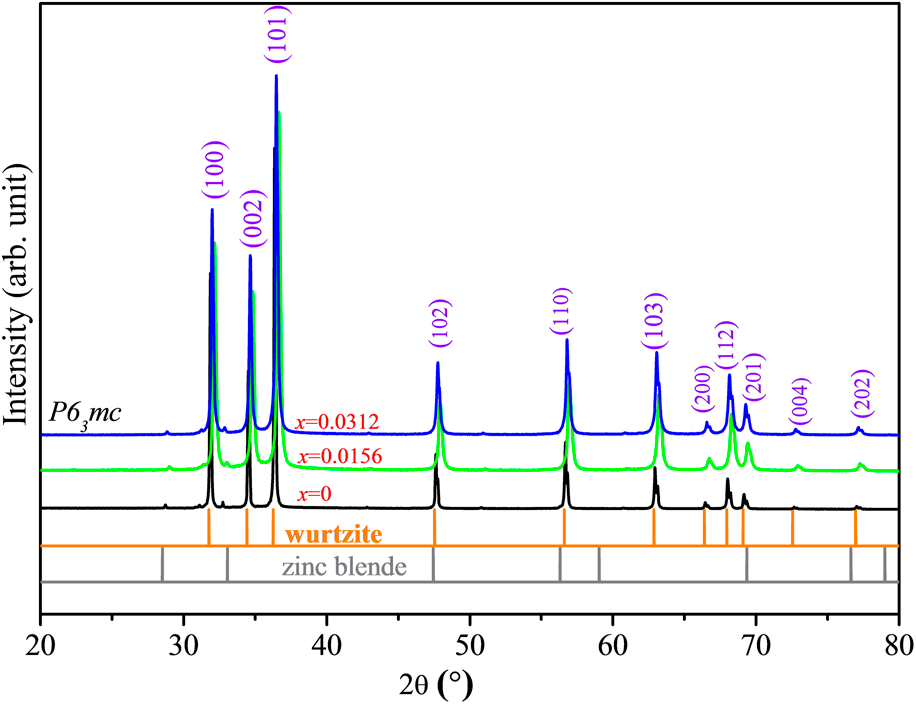Article contents
Improved ultraviolet sensing, photo-stabilized visible transmission, and electrical conductance in Zn1−xGax/2Fex/2O
Published online by Cambridge University Press: 19 May 2020
Abstract

Zn1−xGax/2Fex/2O (x= 0, 0.0156, 0.0312) represents the polycrystalline hexagonal (wurtzite) phase with a space group P63mc synthesized using the sol–gel technique. A comparative study and investigation of structural, optical, and photo-sensing properties of these samples were performed. Structural and vibrational studies show enhancement in the crystallinity of the codoped samples. Optical band gap increases from ∼3.21 to 3.24 eV with substitution because of the improved crystallinity. The photoluminescence properties show modification from yellowish green for x= 0 to a more distinct green for x= 0.0156. The intensity of the luminescence decreases with doping, indicating an overall reduction of defects in the band gap helping the material to become more transparent to visible light. Photocurrent and photosensitivity are modified with the illumination wavelength (290, 450, 540 and 640 nm) with codoping. Sensitivity toward visible lights reduced with codoping. On the other hand, it is more sensitive to ultraviolet light. It indicates the material becomes more transparent for visible light and may be used as photostable device.
Information
- Type
- Article
- Information
- Copyright
- Copyright © Materials Research Society 2020
References
- 2
- Cited by

